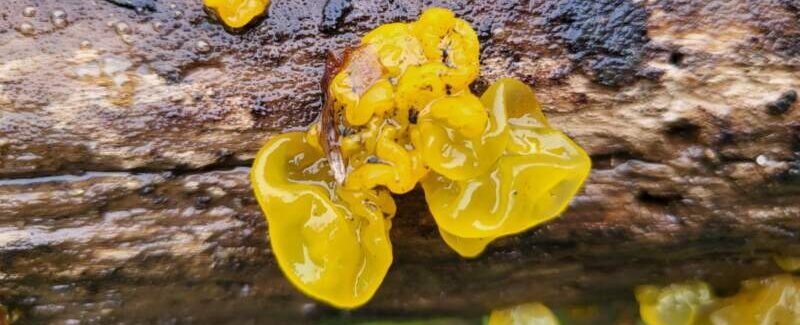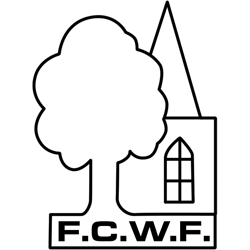Butterflies of Childwall Woods and Fields
If you are a regular walker through the woods and on the fields you will have noticed many butterflies during the warmer months.
In the wooded areas along the paths, you may notice the Speckled Wood Butterflies basking in the sunlight, and most probably you will have encountered a Peacock or a Comma Butterfly on your walks through the fields. They are regular visitors to our site.
Once on the fields, in early April you can’t miss the male Orange Tip Butterflies with their flashy wings darting around looking for a female, who you may mistake for a small white as she does not display the orange tips like the male. Their presence is short-lived as they will disappear after the eggs have been laid.
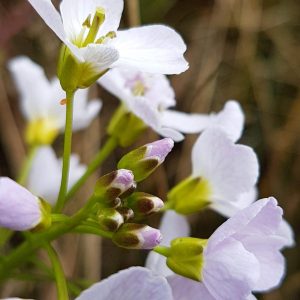
An orange tip butterfly egg
This is an Orange Tip butterfly egg on a cuckooflower on the top field on 9th May 2021 but that can be earlier depending on the weather. The tiny yellow egg contains a minute yellow caterpillar that will leave behind an empty white egg case when it hatches. Look out for these. They appear every year
Send us a photo if you see any of the caterpillars but please leave them on the cuckooflower as that is their main food source.
A word about butterflies.
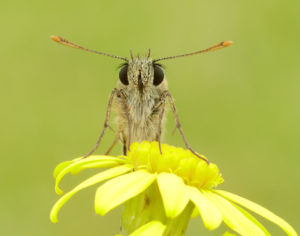
Small Skipper – Iain H Leach- Butterfly Conservation
Everyone loves butterflies, especially children. Butterflies are magical little insects that brighten up our walks and put a smile on our face as we wonder at their intricate patterns and the bright colours of their delicate wings.
BUT
Butterflies are not just things of beauty, they are wonderful pollinators and an essential link in the food chain. Along with their caterpillars, they form an important food source for birds, bats and other insectivorous animals. They attract many different creatures that feed on them and this attracts predators from higher up the food chain. This leads to a well-pollinated ecosystem teaming with wildlife. (Ref #1)
Let’s do all we can to make our woods and fields an inviting place for butterflies and that way improve the whole ecosystem.
If you are interested in finding out more about butterflies and their life cycle, visit https://butterfly-conservation.org or download the free Butterfly Conservation App to help with identification.
iRecord Butterflies
Butterflies you may see on the site.
As it is so difficult to photograph a butterfly, many of the photos below are taken from the Butterfly Conservation website with their kind permission.
Brimstone
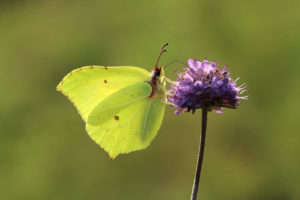
Butterfly Conservation – Mark Searle
The Brimstone Butterfly has only recently reached the north of England as our climate has changed, and a male Brimstone was seen on March 18th 2022 on Childwall Fields.
Very distinctive due to its bright yellow colour, it is thought that the male Brimstone was responsible for the name ‘Butter-fly’. The females are much paler.
Peacock
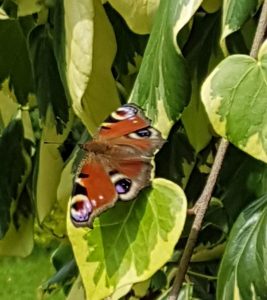
Seen on the fields in March
The Peacock butterfly is easily identified by the large eyespots on its wings thought to be a deterrent to predators.
It is one of our most common butterflies and it is with us all year round. Adults hibernate in winter in tiny crevices in trees and garden sheds and adults emerge in spring to mate.
Nettles are a favourite place for females to lay their eggs, 500 at a time, and then in May, these will hatch into small hairy black caterpillars. These caterpillars then spin a communal web which is their best defence against the many predators looking for a caterpillar lunch.
The caterpillars grow large enough to venture further afield and eventually form a chrysalis where they pupate and emerge as an adult around July time.
One of the largest butterflies, always a welcome sight in our gardens and on our fields.
Speckled Wood
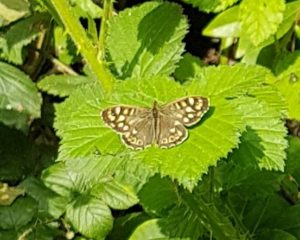
Spotted in Childwall Ornamental Woods in Spring
Speckled Wood Butterflies can be seen in sunny spots throughout the woods flying in spirals of two and three from March to September.
They are rarely seen feeding on flowers as they prefer the honeydew secreted by aphids in the treetops.
Large White
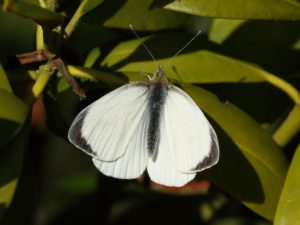
Butterfly Conservation – Dean Morley
First spotted in March on the wetland area of the fields.
Large white wings give this butterfly its name although many prefer to call it the cabbage white as the caterpillars of this butterfly love cabbage, sprouts and other similar vegetation.
Often seen on Childwall Fields from spring to Autumn.
Comma
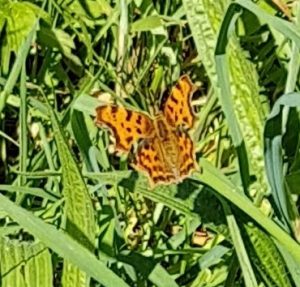
Comma – Childwall Fields
The first Comma might be spotted in March on the bottom field.
Possibly one of the most beautiful butterflies to be seen on the fields, with its brightly patterned wings and lacy edges.
The back of its wings are nothing like the front. They resemble dead leaves where it hibernates through the winter perfectly camouflaged.
You might think it strange to name a butterfly after a punctuation mark until you look at the back of its wing where a tiny white comma can be seen.
Common Blue
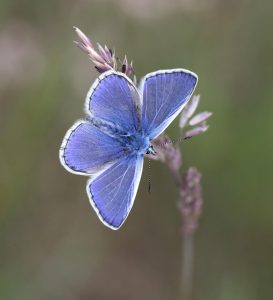
Butterfly Conservation – Mark Searle
Seen in the Ornamental Woodland on April 16th 2022
Although the most common blue butterfly in Britain, this very small butterfly is not too common in Childwall Woods and you are lucky if you see it stretch its tiny blue wings in the sun on a laurel or holly bush.
Often spotted in grassland, the females are often pale blue or even brown making them harder to see amongst the vegetation.
If it stays still long enough you will notice the beautiful white edges of the wings.
Orange Tip
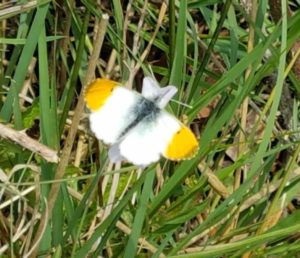
Male orange-tip – Childwall Woods
Seen in the wetland area during April
Only the males have the little orange tip to their wings, and these fly first.
The top field by the wetland is their favourite place and this is where their favourite flowers can be seen.
When the females emerge and are ready to lay their eggs they choose Cuckooflowers, and these are already blooming around the wetland area in mid-April.
PLEASE: Don’t ever try to catch or touch a butterfly. They are far too delicate for that.
And please if you handle caterpillars be careful and always put them back on the same leaf or plant where you found them. That may be their only food.
Enjoy your walks through the site and remember to send us your photos
Click HERE to visit the Butterfly Gallery of Photographs
B Cameron
Photographs are the author’s own unless stated otherwise.
References
1. Butterfly Conservation https://butterfly-conservation.org
2. RSPB Peacock Butterfly | Common British Butterflies – The RSPB
